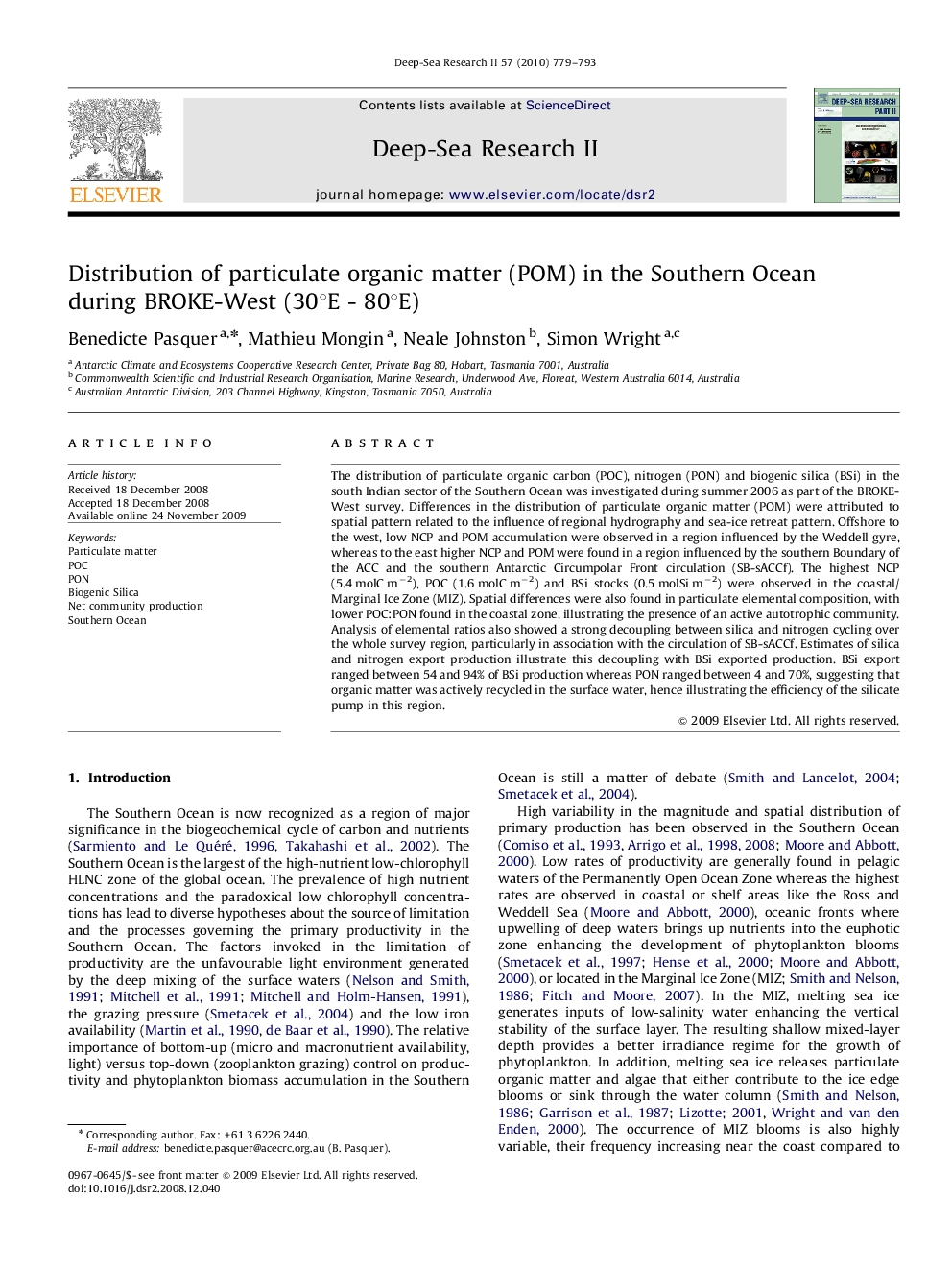| Article ID | Journal | Published Year | Pages | File Type |
|---|---|---|---|---|
| 4537183 | Deep Sea Research Part II: Topical Studies in Oceanography | 2010 | 15 Pages |
The distribution of particulate organic carbon (POC), nitrogen (PON) and biogenic silica (BSi) in the south Indian sector of the Southern Ocean was investigated during summer 2006 as part of the BROKE-West survey. Differences in the distribution of particulate organic matter (POM) were attributed to spatial pattern related to the influence of regional hydrography and sea-ice retreat pattern. Offshore to the west, low NCP and POM accumulation were observed in a region influenced by the Weddell gyre, whereas to the east higher NCP and POM were found in a region influenced by the southern Boundary of the ACC and the southern Antarctic Circumpolar Front circulation (SB-sACCf). The highest NCP (5.4 molC m−2), POC (1.6 molC m−2) and BSi stocks (0.5 molSi m−2) were observed in the coastal/Marginal Ice Zone (MIZ). Spatial differences were also found in particulate elemental composition, with lower POC:PON found in the coastal zone, illustrating the presence of an active autotrophic community. Analysis of elemental ratios also showed a strong decoupling between silica and nitrogen cycling over the whole survey region, particularly in association with the circulation of SB-sACCf. Estimates of silica and nitrogen export production illustrate this decoupling with BSi exported production. BSi export ranged between 54 and 94% of BSi production whereas PON ranged between 4 and 70%, suggesting that organic matter was actively recycled in the surface water, hence illustrating the efficiency of the silicate pump in this region.
